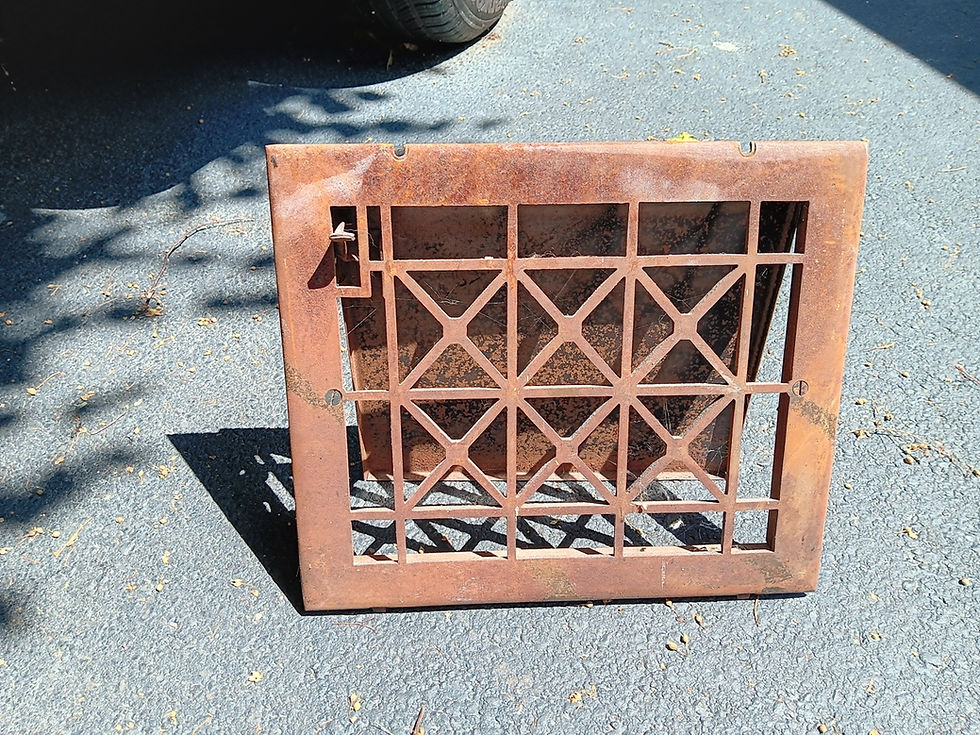Ideas from Ed: Sill-y adventures (Volume 5, issue 1)
- edwardpetrus

- Jan 3, 2022
- 3 min read
There is a lot of information online detailing the steps in casing a window or door, as well as building jambs and windowsills. Many videos are by people with a lot more carpentry skills than I have, but I still know a trick that I’ll share this month.
Although I’ll be demonstrating my concept on a sill, the real benefit comes from using this technique on something “longer” like the window jambs. The problem with most online information is that what’s usually shown is “straight and square” while most houses rarely are. If you are shown something that’s a little “out of square” it’s usually a simple taper that’s needed, and nothing more complex like a “bow in the middle” scenario.
Since I’m just concentrating on how to make things fit properly, I won’t go into detail about how to design and size a windowsill. Here’s a picture of the rough sill cut to length, edges rounded over, and the two “ears” already properly cut, but before final fitting into the rough window space. Measuring from the face of the wall to the window, I marked that distance from the inside notch of the right ear and marked it on top of the sill. I then repeated that procedure on the left side. I connected those points in the penciled line shown. I’m holding a combination square from the right front of the sill to that line as a reference.

Study the picture below carefully. Again, the pencil line shows how the back edge of the sill needs to be cut to fit tightly against the window. Without changing the setting on the square, you can see that the sill must be inserted more deeply into the window cavity on the left side than the right side. That means you just can’t simply cut it to width. Remember, the front of the sill must be in line with the wall and fit tightly against it. An adjusted cut of some type must be done on the back so it fits well. (Again, on a jamb, typically longer in length, you’d want to mark those needed depths at more points, or at least at an additional mid-point, instead of just at each end, in case there’s a bow to account for…)

Cutting a taper can be done using a special tapering jig on a table saw, using a jointer and a fancy tapering technique (maybe I’ll show that another time), or freehand. If doing it freehand, you should at least consider clamping the sill down to a worktable and setting a guide piece aligned parallel to the cut line to run the saw against. Doing it completely by hand without a guide won’t be satisfactory unless you’re way smoother and more accurate than I am.
My “secret technique” involves using a table saw to cut the sill to width at its widest point. However, the real trick is to set the saw blade to an angle (my personal preference is 15 to 20 degrees) rather than making a square cut. The top of the bevel is the top of the sill and the undercut is the bottom. In the picture below, the bevel has already been cut, but to show the concept more clearly, I’ve drawn in an exaggerated bevel with an orange line:

The penciled cut line will still be clearly visible on the top surface of the sill since the sill was cut to the maximum width needed. It’s very easy at that point to use a hand plane to shave off slices of the top of the bevel back to the line. It goes very quickly since all that’s being cut is a small section of wood, not the full thickness. If the line accurately reflects what was needed (be careful with your measurements!) the cut line can be a taper, a curve, or whatever is needed for a tight fit. Placing the sill on a flat surface (a concrete floor in my situation) gives the plane a nice surface to ride on to help keep it square, although (because of the bevel) that’s not critical. Just shave to the line, and you should have a nice, snug fit.

Here’s how the sill fit. A tiny bit of caulk could be spread along the joint to fill in any imperfection, but it should be minimal. I used this same technique on the jambs. Casing around the jambs will be installed soon.

One final bit of advice. For sills and jambs, DON’T use composite material. Use primed real wood. It’s more rigid, holds nails better, and generally looks nicer.
I hope all your projects go well. Thanks for reading, and happy restoring!
Ed
If you’d like to download a PDF of this “Ideas” column, click here:




Comments